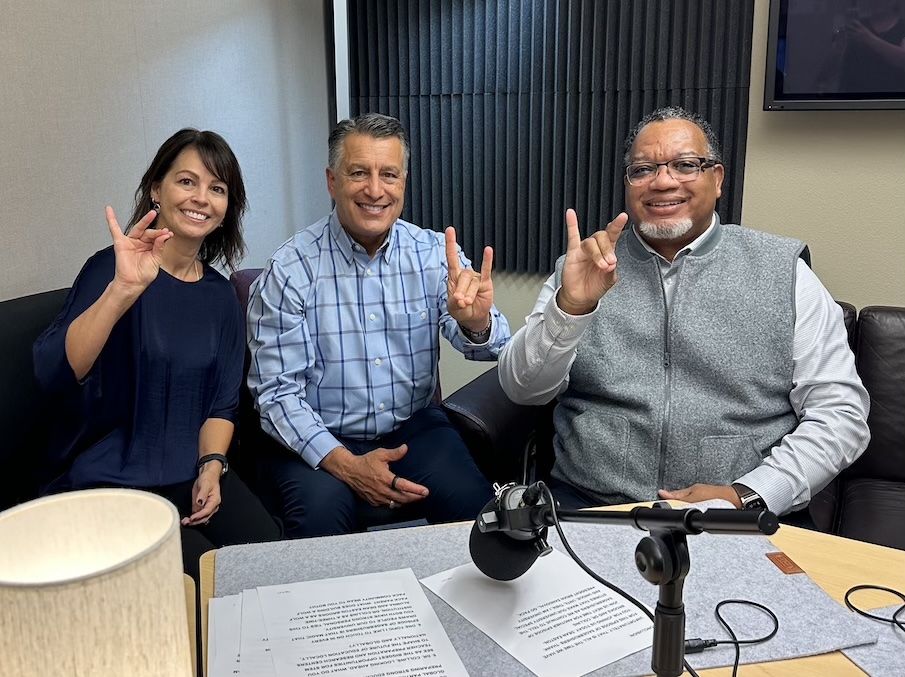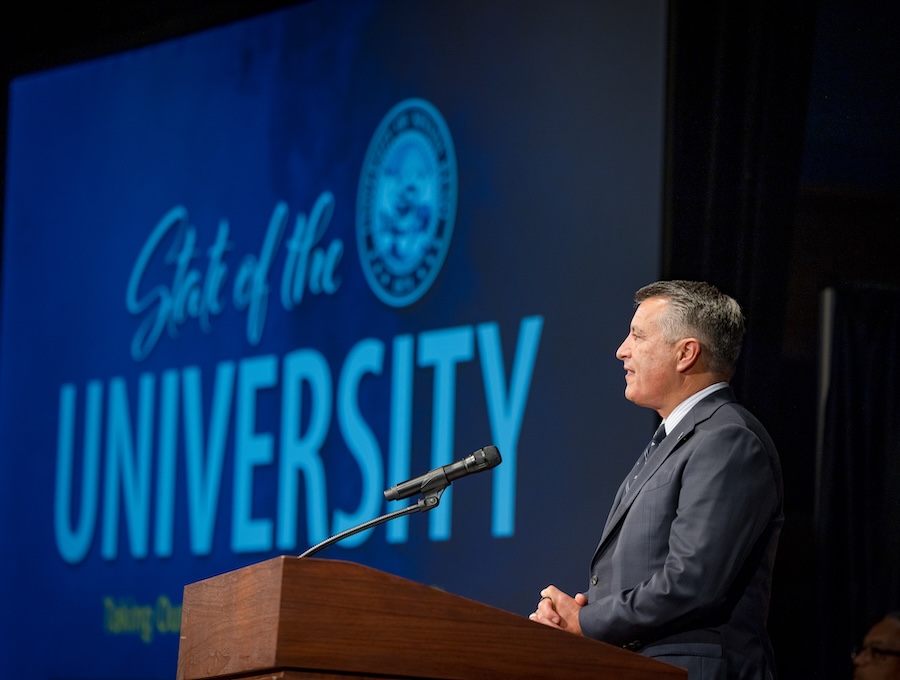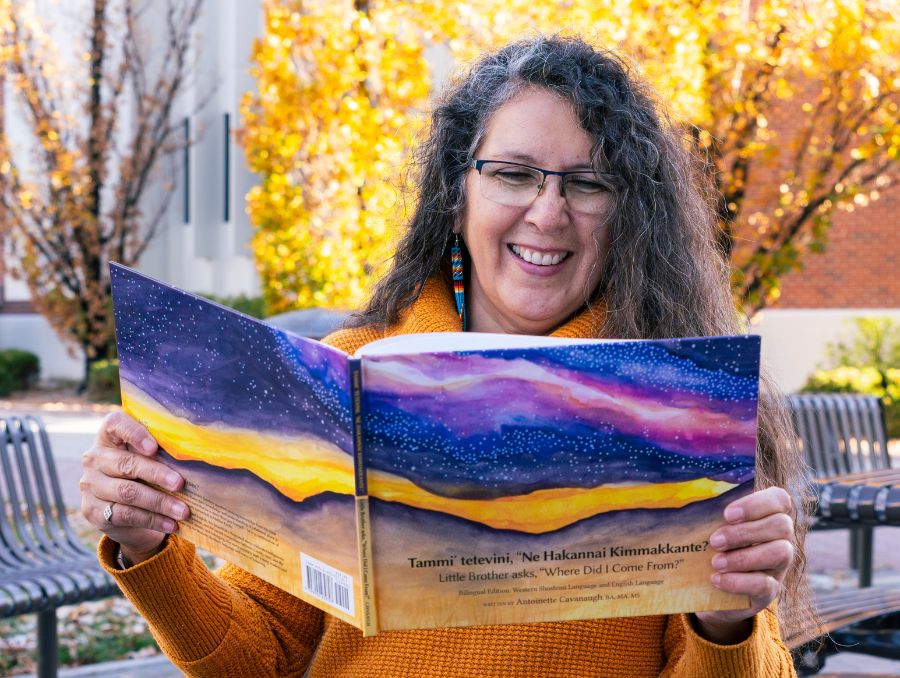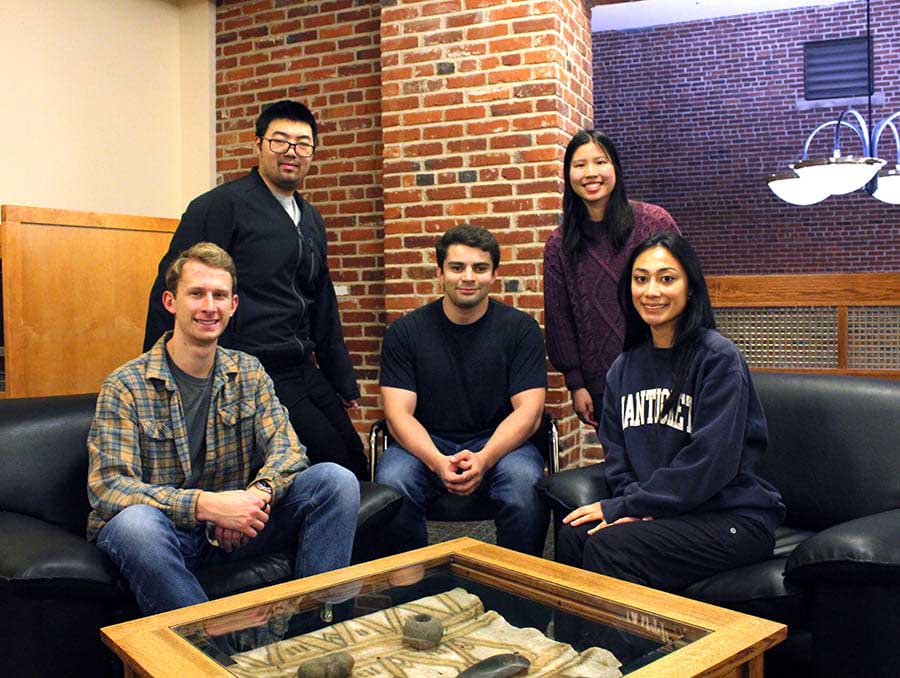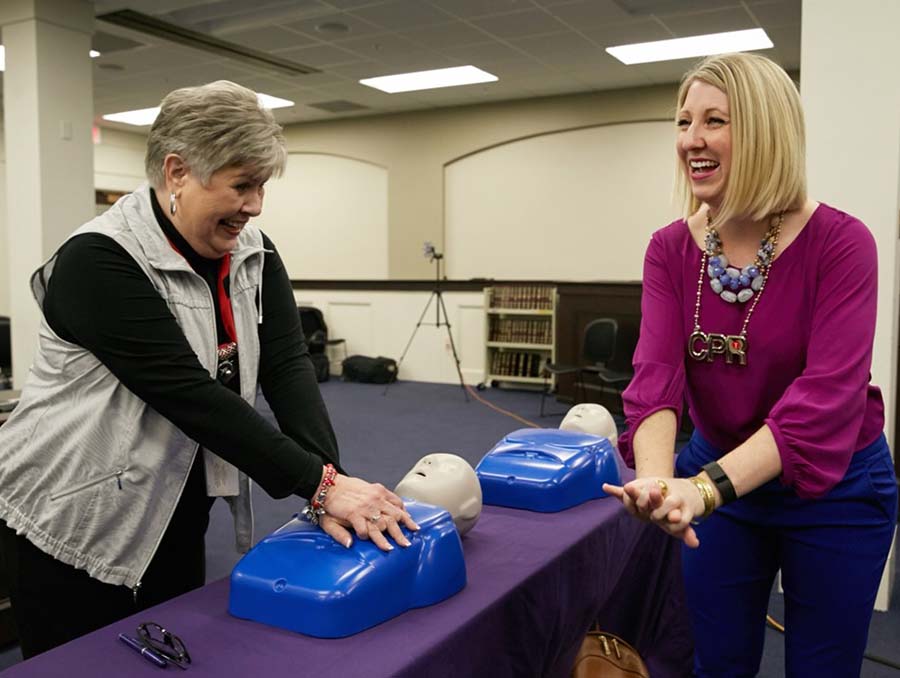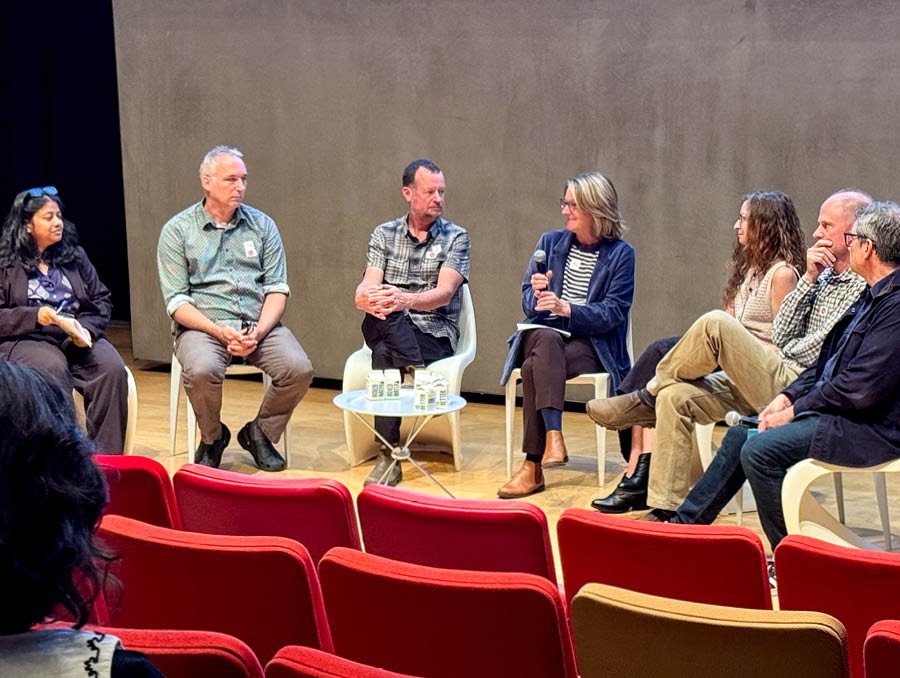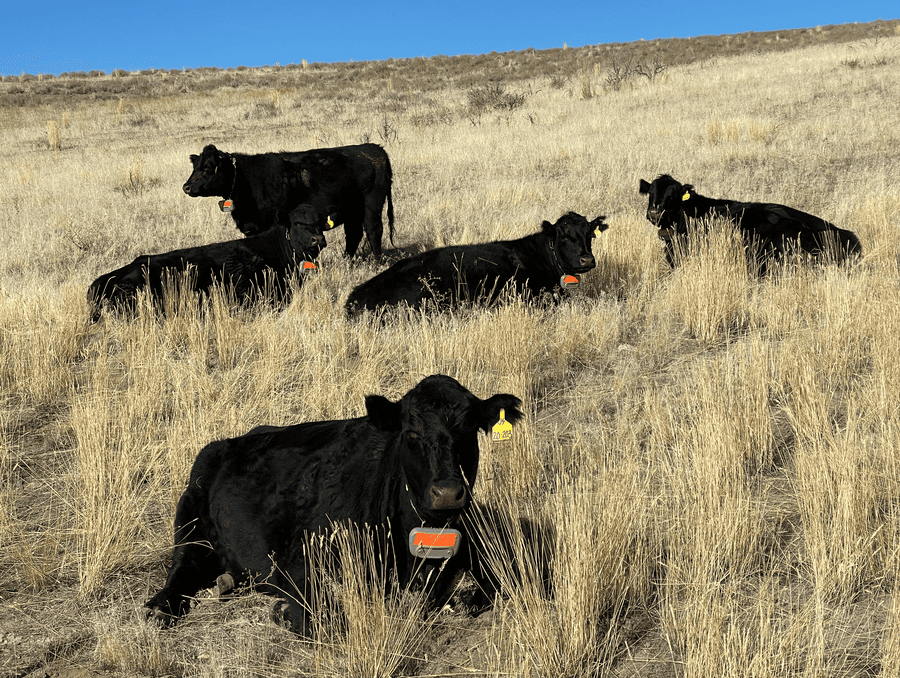Since his passing on Saturday night at the age of 73, friends and colleagues of University of Nevada, Reno President Milton D. Glick have been recalling and re-telling their favorite "Milt" stories.
Invariably, the stories have been more personal than professional.
How whenever Milt Glick came into a room, the room immediately became comfortably settled, reflective of the type of calm, reassuring person the 15th president of the University was.
How whenever Milt Glick told stories, his blue eyes would twinkle with a boy's delight. His storytelling ability could be pure jazz or pure symphony, depending on the situation.
And that, really, was what made Milt so special.
No matter the situation, no matter the people in the room, he was always at home.
Young people gravitated to him because he listened to their stories. The young could sense in Milt shared experience and common ground - that like them, he possessed a deep-rooted optimism for the promise of tomorrow. Like the young, Milt never felt any limitations in wanting to help others.
Graduate Student Association President Matt Smith recalled on Sunday night how generous Milt was, how a busy university president always found time to meet with a young man hoping to help others through education. Smith is currently finishing his dissertation in Educational Leadership.
The two had a regular monthly meeting, and the discussions ranged from budget to music (Smith is a former drum major; one of Milt's sons was a member of the band at Michigan) to similar experiences (both Smith and Milt had lived for long periods in the Detroit, Mich., area) to how proud they were of their wives (Smith's wife is an original Millennium Scholar and graduate of the University; Milt's wife, Peggy, had been the thoughtful and loving guide throughout his studies and work in academia.)
Smith noted that Milt didn't have to meet so regularly with him, yet he did.
On his Facebook page, Smith wrote of Milt's passing: "We've lost a tremendous leader, advocate and friend."
The middle-aged and the old also sought Milt's counsel. They knew Milt had done and experienced so many different things in a career in higher education that spanned more than 50 years, he was rarely at a loss for a plan of action, a common sense solution that could still salvage and save even the most trying of days.
Lattie Coor, a colleague of Milt's during his 15-year tenure as provost at Arizona State University, wasn't surprised by the genuine outpouring of sadness the campus has shown.
"Milt dedicated his entire adult life to universities, their faculty, staff and students, more so than anyone I've ever known," Coor said. "He led them, loved them and advanced them with admirable focus and determination. How characteristic of his life that he was in the midst of helping Nevada through these difficult times when he was so suddenly taken from us."
Of all the stories about Milt Glick, though, here is one that summarizes his five years as president at the University as well as any.
It is illustrative of the kind of impact he had on the University's students, and how they, in turn, responded to him.
Sarah Ragsdale was president of the Associated Students of the University of Nevada (ASUN) from 2007-2008. Milt was fond of Sarah for a number of reasons: how hard she worked, how intelligent and empathetic she was (a health ecology major, Sarah had gone on to Boston University's School of Public Health to study for her master of public health degree), how she had responded with such grace and maturity when the first round of budget cuts had hit campus during her student presidency.
Sarah was just as fond of Milt, and showed how deeply she felt about him one summer afternoon when she bounded into Milt's office on the second floor of Clark Administration. Just a few moments before, her boyfriend, Patrick Mahoney of Norwell, Mass., had asked for Sarah's hand in marriage in the rose garden by the University's Honor Court.
Sarah was overcome with emotion, shedding tears of joy. Milt, too, was overcome with emotion, as he realized that he was literally the first person other than Patrick and Sarah to learn the wonderful news.
"I wanted to share the news with you because you're such a special person to me," Sarah said.
"It was something I will never forget," Milt said later. "For Sarah to want share such news with me ... you're prepared to talk about curriculum and the budget or some other academic matter ..."
Then he went from sounding like Jefferson to sounding like Jolson.
"But finding out about marriage proposals made in the rose garden?" he said, winking. "I've gotta admit: I've got the greatest job in the world. I love this job."
Eli Reilly, ASUN president from 2008-2010, summed up Milt's impact on the students well during an interview in 2010: "I don't know how to compliment Milt Glick more than to say that he's always, truly been the friend of every student we've ever had on campus. He understands better than anyone I've ever met, that this University is the connective tissue to a better life."
Milt was the master of many things, though he often self-deprecatingly said he had conquered none of them.
"That's why I'm a university president," he would quip.
He certainly was the master of the 5 by 7 card. Or more precisely, the 4 by 5 card. Or was it the 3 ½ by 4 card?
He had used index cards printed with measurable goals during his time as provost at Arizona State University. He found that they fit better in his pocket if he sliced them down to manageable size with scissors.
"It's got to fit in my pocket," Milt said of the index cards. "If they don't, I'm not going to remember everything that's printed on them."
At the University, His "Measuring Success" and "Keys to the Future" trumpeted, in vest-pocket-size print, his vision for the state's oldest highest institution of learning.
His "Keys to the Future" included creating a "culture of completion" to improve graduation and retention rates on campus; creating a "sticky campus" through facilities and programming that keep students engaged; increasing research capacity and quality; blurring the lines between the campus and the community. The "Measuring Success" cards included specific metrics for enrollment, retention and completion.
He had literally thousands of these cards printed during his presidency. He handed them out to captains of industry and custodial staff. He gave copies to the largest donors and the newest students. He shared them with the elected officials and minimum-wage casino workers. He distributed them with a preacher's fervor, and talked of their value with the enthusiasm of Steve Jobs extolling the virtues of the newest iPad.
Interestingly, they caught on. The message of the "sticky campus" did just that ... it stuck.
Just one example came on Sunday, with a statement from U.S. Sen. Harry Reid, long a friend to the University, who noted that, Milt was like "a breath of fresh air" to the campus, "with his trademark hat and great sense of humor ... loved by faculty and students alike." And then, in words that could have just as easily been printed on one of Milt's beloved index cards, the nation's most powerful senator also noted, "Milt fostered a culture of excellence at UNR by increasing graduation rates, growing the school's capacity as a research university and building a more diverse student body by opening the doors to a college education for more Nevada students."
When Milt came to campus, there were a few columns on his cards marred with red print - areas where the campus was deficient and needed to improve. A few weeks ago, as the president prepared for a Town Hall meeting on campus, he held a new card, with the latest updates on how the University had fared in reaching the metrics he had set.
The conversation had been difficult to that point, centering on unpleasant budget scenarios. Yet, for a moment, as he held the card, Milt beamed. It was like he was holding a newborn baby aloft.
"Did you notice?" he asked, his words coming forward deliberately, slyly, "that there is no more red print on this card?"
And that was the way Milt Glick was. In this self-aware, self-congratulatory age where people are constantly circling back, dropping bread crumbs of approval behind them for others to see, Milt Glick let the numerous things he accomplished for the University speak for themselves.
Even the most jaundiced critic has to note that the University, even after absorbing $100 million in budget cuts, is at its highest point ever. The campus, with no more than a handful of National Merit Scholars when Milt became president in 2006, now has 38. Enrollment, retention and graduation are at all-time highs. For the first time ever, the University is ranked among the Tier I schools in U.S. News & World Report's prestigious annual rankings.
At a time when the University shouldn't have believed in itself, it did.
"These have been tough times," he said in 2009. "But these are times we will come through and build upon."
He was sway-kneed and balding, and in need of his trademark floppy hat on sunny days. And, he was always completely natural. His calm, understated words and actions were always as cool and composed, fluid and graceful, as two waterfowl landing on a lake.
He could quote the noted futurist Richard Florida and the "Rise of the Creative Class" as readily as he could quote the actor Richard Benjamin from the film, "Goodbye, Columbus." He could mix worlds and ideas in ways that remained memorable long after he spoke.
When asked once why he thought it was a good idea to recruit National Merit Scholars to campus and why special attention should be paid to such "smart" kids, he smiled and said, "We pay a lot of special attention to 6-foot-9 kids with soft hands and soft touch ... why shouldn't we pay equally special attention to talented kids whose hands were made by Stradivarius?"
"Whenever I talk about President Glick, I like to say that he always has a way of keeping the conversation on the high ground," said Guy Hoelzer, chair of the Department of Biology and former chair of the Faculty Senate.
Nevada athletic director Cary Groth always remembered the first President's Council she ever attended in Phillips Conference Room on the second floor of Clark Administration, with President Milt Glick in charge.
The first thing the University's 15th president, the chief executive officer of the state of Nevada's oldest and most prestigious institution of higher learning did was ... not sit at the head of the table.
"Milt always chose to sit in the middle of the table," Groth said. "That, I think, is a message in and of itself."
The Glick presidency was never an arm's-length type of presidency. During his Commencement addresses, the theme might change, but he was adamant about one thing: acknowledgement of teachers and families had to be made. "You've got to thank the teachers and you've got to hug the families," he said once. "Without either one, what else is there in the world?"
Again, a Groth experience early on illustrates how much he cared about the people around him.
In April 2006, when Milt was still a candidate for the University presidency and touring the campus for the first time, he visited with Groth for only about 15 minutes before Groth was called away. A member of the Wolf Pack baseball team was in the hospital and would later die.
"The next night, while Milt was still on campus for his interview, I went to dinner with him and a few of the vice presidents from the President's Council," Groth said. "I'll always remember him for that evening. Before I even had a chance to more fully explain why I had left the meeting the day before, the first question Milt asked was about that young man and his family. He wanted to know how they were doing. He made it a point before I even had a chance to tell him.
"That, I think, speaks volumes about Milt Glick. He truly cares."
The loss of a president while still in office is not unprecedented in the 137-year history of the University of Nevada, Reno.
One of the University's earliest and most able and most durable presidents, Joseph E. Stubbs, died in office in 1914 following a remarkable 20-year tenure.
There are many interesting parallels between Joseph Stubbs and Milt Glick. The campus expanded greatly under Stubbs' leadership. An emphasis was placed on the student experience on the fledgling campus. Even in a time of crippling economic conditions, the University found a way to prosper under Stubbs' direction.
More than that, however, Stubbs became, in the words of the esteemed University historian James Hulse, "the conscience of the community. ... It is notable that Stubbs was one of the few presidents in the University's history who was willing to take a stand on the moral questions of the day. ... He believed he had a mission to inform Nevadans, his colleagues, and students about the various roles and functions of the University."
So it was with President Milt Glick.
As the budget situation in the state worsened over the past three years, Milt took it upon himself to extol the value of higher education in the state.
"Nevada needs more education, not less," he said often at public events. "It's about what we want our children and grandchildren to inherit," he said at other gatherings. "Do we want them to have the same prosperity that others who came before them had?" And, in response to whether or not the work of the University still mattered during a time of severe budget reductions, he said, simply, "I still believe that what we do at our University will determine the quality of life for all Nevadans."
At his inauguration, in September 2006, Milt noted that boom-and-bust Nevada had the perfect panacea at its fingertips. As he stared out on a sunny Quad, he reminded those there that "the next Comstock Lode is not in the mines of Nevada ... it is in the minds of Nevadans."
Milt embraced education because it had made all the difference for him, and he knew it would make all the difference for every student in his charge. He told graduating students at Commencement in 2009 to hold their degrees "the way the great writer E.B. White once instructed us ... 'Hold it like holding a love letter in one hand - it has so special a meaning.'"
During a recent conversation, Milt shared that one of his heroes as a young man had been Sargent Shriver, the Kennedy-in-law who founded the Peace Corps. The Peace Corps was founded 50 years ago this spring, when Milt was 23 years old.
He quoted the three qualities that Shriver looked for in any potential Peace Corps volunteer: Courage, commitment and conviction.
These three qualities could have easily been Milt Glick's guiding principles as well.
"Do you know what Sargent Shriver's best line ever was?" Milt asked, the words coming with a light, thoughtful creativity. This was the way he always spoke, the dexterous words finding a way to calcify deep into a person's soul. The way he talked - the way he always talked - he could've just as easily been quoting poetry as prose.
"'Begin to look less at yourself and more at each other; learn more about the face of your neighbor ... and less about your own,'" Milt said.
He paused for a moment. And then he smiled.
"I think that's just wonderful," he said.
They were words that informed and imprinted every day and every interaction Milt Glick ever had.
His legacy will be that he made us all better ... simply by being himself.

